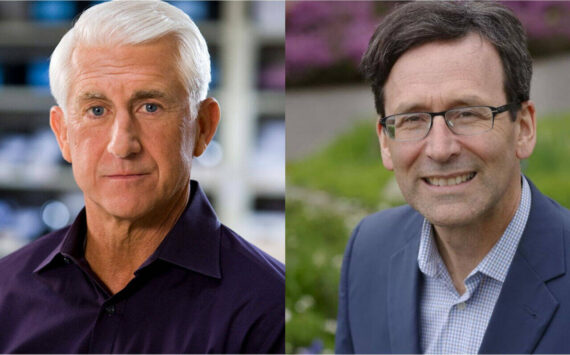By Morf Morford, Tacoma Daily Index
With all the news about expanding real estate markets, stocks, cyber-currencies and interest rates, it is easy to forget some of us – approximately 63 million Americans are, in fact, either unbanked or underbanked.
That’s the term for those who don’t use banks to make basic financial transactions like cashing checks, saving money or applying for credit.
The main reason that U.S. households did not have a bank account in 2019 was that they were unable to meet and maintain minimum balance requirements.
To put it mildly, not having a bank account is a bit complicated.
Buying anything of value with cash only is nearly impossible.
Renting is, at best, difficult without a bank account or a credit rating.
A 2021 Federal Reserve report on the economic wellbeing of U.S. households found that abut 5% of adults in the U.S. did not have a bank account in 2020, while 13% were underbanked, meaning that they had a bank account but also, for whatever reason, used a service like a money order or payday loan service.
What’s in your wallet?
On the other hand, 81% of American adults were fully banked, owned a bank account, and did not use a service like a money order or check cashing service.
As you might guess, the report showed unbanked and underbanked rates were higher among individuals with lower income and less education – though 1% of adults who earned $50,000 or more in 2020 were also unbanked.
The research also showed that unbanked and underbanked rates were higher among Black (13%) and Latin Americans (9%) than for White and Asian Americans (both 3%).
As you might expect, education has a lot to do with our banking habits. When looking at education level, the report found that only 37.1% of households without a high school diploma used bank credit compared with 87.5% of households with a college degree.
If someone you know has problems with maintaining those minimum balances, there are other options. For example, Ally Bank and Capital One both offer checking and savings accounts with no minimum balance requirements and no maintenance fees.
Credit unions tend to be very flexible with these terms. They require membership, but qualifying as a member sometimes only requires that you live in a certain geographical area.
The states with the highest percentages of unbanked individuals in 2019—7.6% or more of the local population—included New Mexico, Texas, Oklahoma, Louisiana, Mississippi, Tennessee, Alabama, and Connecticut.
Life without a bank account
Many years ago I had a male student who was unbanked.
He had been legally required to pay child-support.
To avoid paying, he avoided any legal paper trail of work, income taxes or credit.
To put it mildly, it was complicated.
He couldn’t rent an apartment in his own name.
To work, everything had to be “under the table” – no Social Security, no unemployment payments, and to cash a check, he had to go to a check-cashing service which took a huge fee.
He had to pay – and get paid in – cash only.
As far as a variety of government agencies were concerned, he literally did not exist.
I don’t know how long he did this, or if it seemed to be working for him, but it certainly seemed like it would have been far easier to pay his back payments – and set up a bank account.
In other words, being unbanked is difficult and expensive.
In short, banks and credit unions make life work for most of us.
Whether it is home loans or credit checks, or in many cases, employment background checks, we count on banks and credit unions in more ways than most of us ever notice.
It’s odd when you think about it, but it makes sense; sometimes the money we can’t see has more impact on our lives than the money in our pockets.
Maybe money is more like information – it doesn’t matter so much what we have as much as what we have access to.






